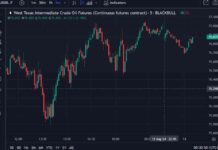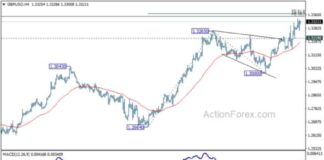The Bank of Canada (BoC) is anticipated to lower interest rates by another 25 basis points to 4.25% at their upcoming meeting next week. This potential rate cut would follow similar reductions made in both June and July. Governor Macklem is expected to maintain a dovish stance, emphasizing the softening economic conditions that suggest a continued downward trend in inflation.
While the Consumer Price Index (CPI) remains a factor in the BoC’s decision-making process, it is noted that these figures reflect past economic conditions and may not fully capture the current economic landscape. Despite a 2.1% increase in GDP in the second quarter of the year, surpassing the BoC’s expectations, per-capita output has declined for the seventh time in the last eight quarters. Additionally, the unemployment rate has risen by nearly one percentage point from the previous year, with expectations of further increases to be reported in August.
Governor Macklem has reiterated the central bank’s belief that inflation will continue to decrease, with the possibility of setbacks along the way. However, July’s CPI data revealed a surprise downside, indicating the potential for further rate cuts. Looking ahead, the BoC may consider additional rate reductions given the current economic conditions. It is projected that a total of 150 basis points in cuts will be implemented by mid-2025, including the expected cut in September.
While the BoC has been relatively swift in adjusting interest rates, the U.S. Federal Reserve has faced a more complex economic environment. Despite strong GDP growth and inflation concerns earlier in the year, the Fed has maintained its stance on interest rates. However, a recent downturn in U.S. labor market data has raised concerns about a potential slowdown. The unemployment rate in the U.S. has increased, prompting worries about a significant labor market contraction.
The current economic slowdown in the U.S. is seen as a normalization rather than a collapse of the broader economic landscape. While temporary layoffs surged in July, there is an expectation for a partial reversal in August. Federal Reserve Chairman Powell has indicated that a further deterioration in labor market conditions would not be favorable. However, if the upcoming report reveals a shift from temporary to permanent job losses, it could lead to additional interest rate cuts beyond the current projections for this year.
Looking ahead to the upcoming week, attention will be on Canadian employment data, which is expected to show a modest increase in August. Despite recent declines in job numbers, the growing population is likely to outpace job growth, leading to a rise in the unemployment rate. Additionally, the Canadian trade surplus is projected to expand in July, driven by increased exports in motor vehicles and higher oil prices, boosting the energy trade balance.
On the U.S. front, trade deficits are expected to widen in July, with imports rising and exports remaining flat. The advance trade report suggests a significant increase in goods deficits, highlighting potential challenges in the trade sector. Overall, these indicators will provide further insight into the economic conditions in both Canada and the U.S.
In conclusion, the BoC’s potential rate cut reflects ongoing concerns about the economic outlook, while the U.S. Federal Reserve faces challenges in navigating a more complex economic environment. The upcoming data releases will shed light on the current state of both countries’ economies and may influence future policy decisions. It is essential for policymakers to remain vigilant and proactive in addressing any emerging risks to ensure economic stability and growth.

















